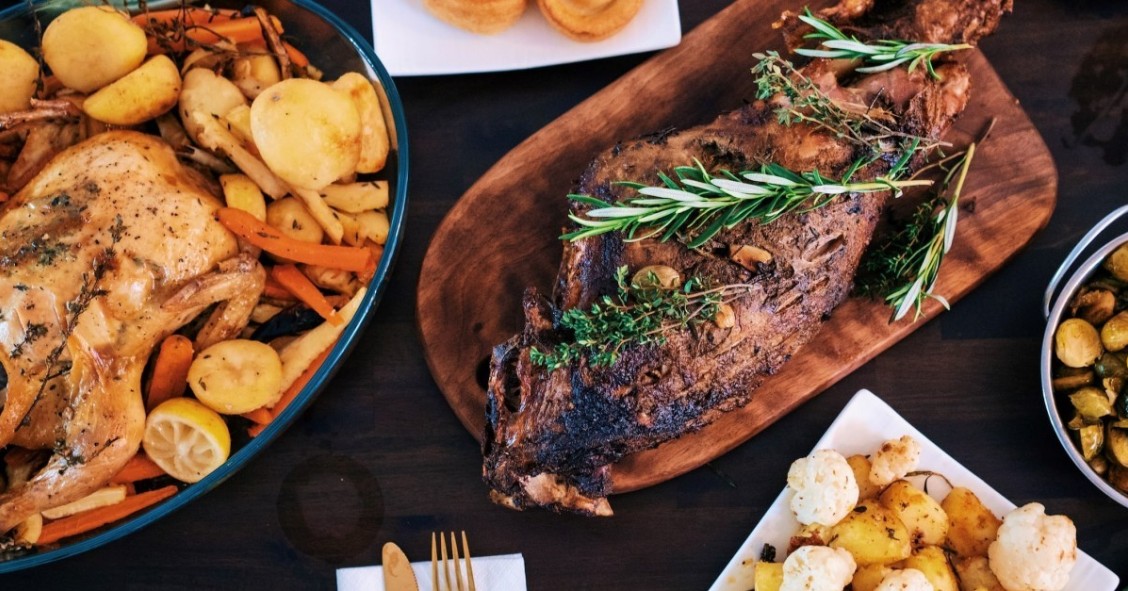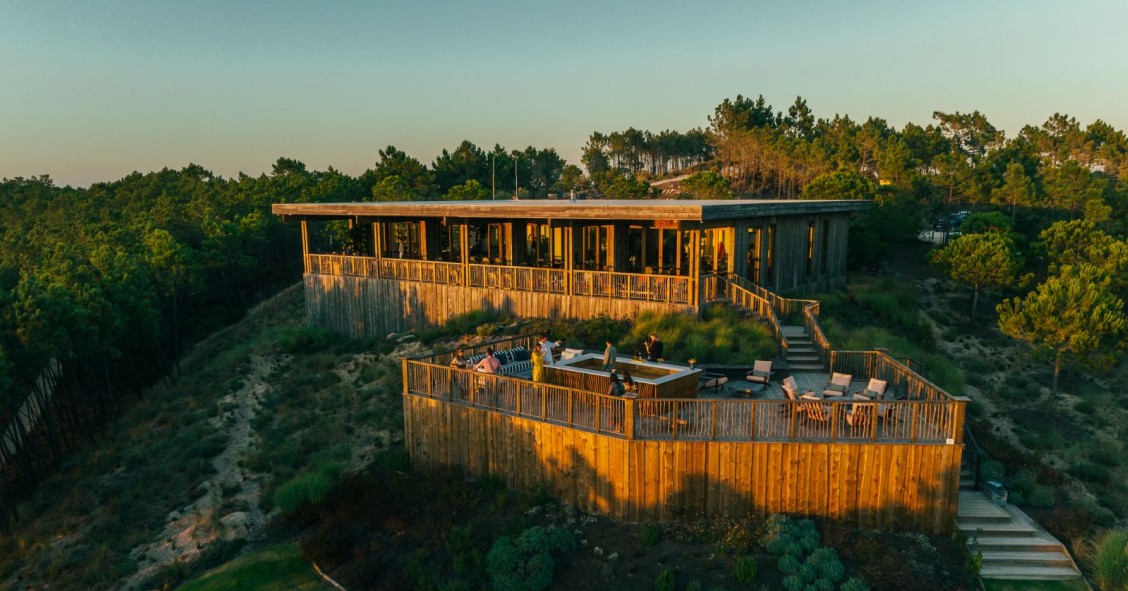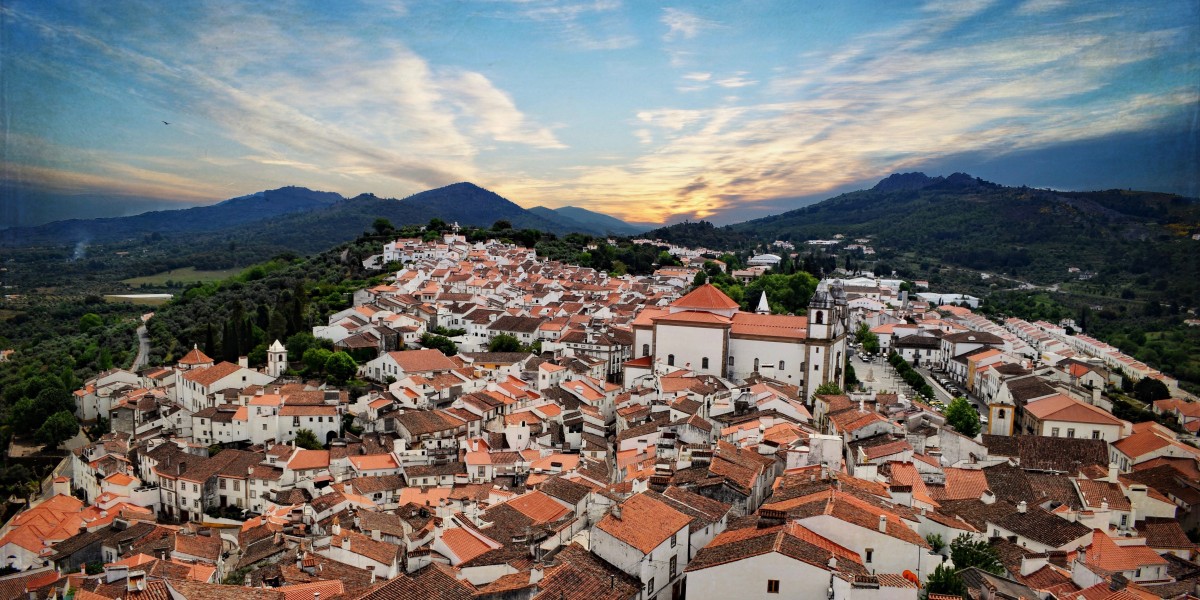
Alentejo spans a vast swathe of southern Portugal, with rolling cork oak estates, olive groves, and whitewashed towns. Living in Alentejo is all about unhurried days, market‑fresh food and robust wines, and wind‑swept Atlantic beaches.
Is Alentejo a good place to live?
If calm, big skies, proper seasonal food, and value matter most, Alentejo is a very good place to live. It suits remote workers, creatives, wine lovers, hikers, and anyone easing into a steadier rhythm. It’s less ideal for people who need big-city careers, lots of international schooling, or a packed nightlife.
People often ask if the Algarve is a good place to live. It is for beach-led routines, international communities, and services in English. Alentejo is quieter and usually cheaper, with Portuguese daily life front and centre.
Pros and cons of living in Alentejo
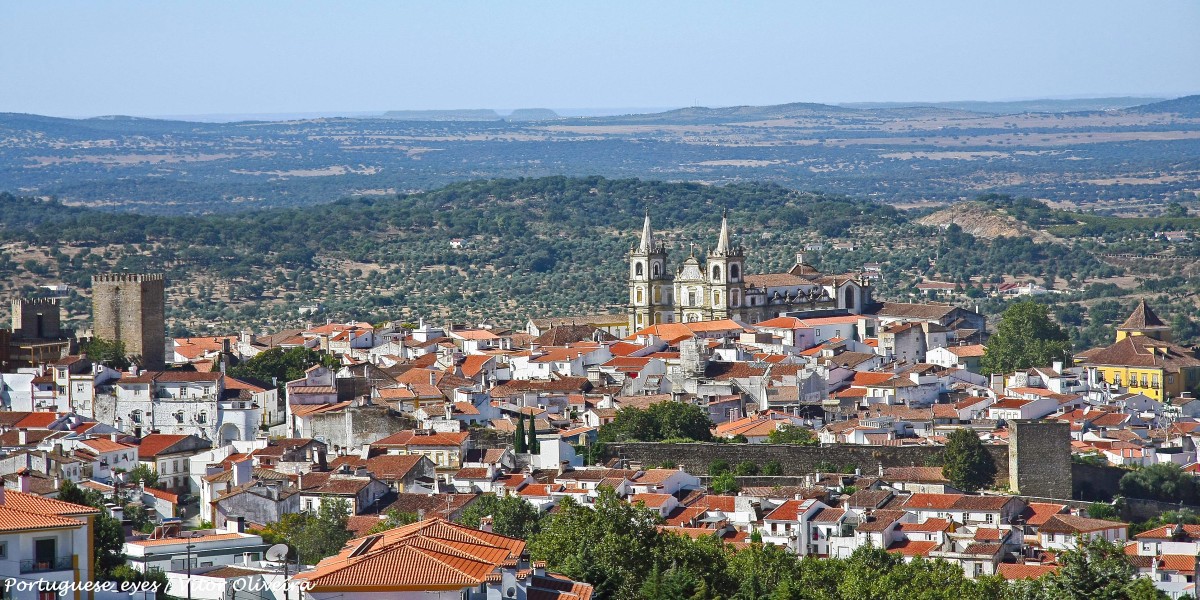
Living in this part of Portugal certainly comes with its advantages:
- Lower housing costs inland and realistic space for gardens and workshops
- Strong regional cuisine and wines at affordable prices.
- Wild beaches on the Costa Vicentina without Algarve crowds outside summer
- Easygoing local admin once registered, and a neighbourly feel
However, like all places, living in Alentejo has its drawbacks:
- Heat inland in summer and chilly interiors in winter without upgrades
- Sparse public transport, meaning a car simplifies life a lot
- Coastal rentals swing with the seasons
The weather in Alentejo
Summers inland are hot and dry. Expect regular 35°C days in July and August around Évora and Beja, with occasional peaks into the 40s. The coast is milder and breezier thanks to the summer wind, nortada.
Winters bring crisp mornings and cold interiors in older houses. January hovers near 8–10°C in Évora, with more chill up in the Serra de São Mamede near Portalegre. Rain clusters in late autumn to winter, plus, drought years aren’t rare, and water rules can tighten.
Cost of living in Alentejo

Day-to-day costs are friendly once housing is sorted, and the inland towns remain some of the best value in mainland Portugal. You may find a prato do dia lunch inland at around €10–€12, but on the coast it creeps to €12–€14.
According to Numbeo:
- Cheap main course at an inexpensive restaurant: €10.00
- Meal for two at a mid‑range restaurant: €35
- Beer out: €2
- Cappuccino or coffee at a café: €1.70
- Loaf of fresh white bread: typical bakery range locally is around €1.30–€2.20]
- Basic utilities for an 85 m² flat: €100–€150 per month
Property for sale and rent in Alentejo
As of October 2025, property prices in Alentejo averaged 1,904 €/m², making it one of Portugal’s more affordable regions overall, second only to the interior of the Centro region. Within the area, property prices in the Évora district were about 1,525 €/m², in the Beja district around 1,352 €/m², and the cheapest were in the Portalegre district at roughly 893 €/m². The coastal slice administered via the Setúbal district sits higher at about 3,114 €/m².
Rent prices in Alentejo averaged 11.5 €/m² in the same month, well below Portugal’s average of 17.0 €/m². This means an 80 m² apartment would typically cost about €920 per month.
Snapshot by district: rent prices in the Portalegre district averaged around 8.0 €/m², in Évora district about 11.2 €/m², and in Setúbal district roughly 14.1 €/m².
- Évora: one-beds often costs around €900 per month. Character homes inside the walls are cosy and atmospheric.
- Beja, Elvas, Portalegre: one-beds more like €700–€800 per month, with good value on larger houses.
- Vila Nova de Milfontes and Porto Covo: off-season one-beds roughly €1,000 per month, jumping in summer.
- Comporta/Melides: premium territory with limited year-round rentals.
A single person renting modestly in an interior town can get by on roughly €1,000–€1,300 per month. In Évora or along the coast, €1,500–€1,800 per month is a safer bracket, depending on seasonality and house type.
Living in Alentejo as a foreigner
Many Brits and other foreigners still pick the Algarve for convenience. However, in Alentejo, they gravitate to Évora for culture and rail to Lisbon, Vila Nova de Milfontes for a year‑round coastal base, and the Comporta/Melides area for premium second homes.
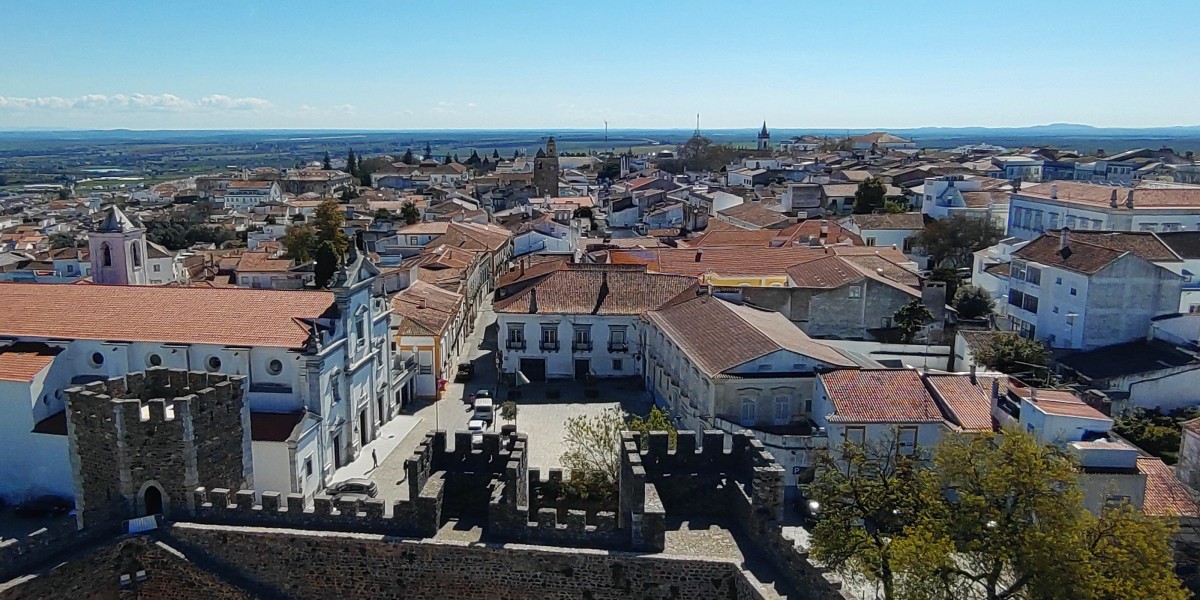
Schools
International options inside Alentejo are thin. Most families use Portuguese public schools, sometimes adding tutoring for language. If an international curriculum is essential, some parents base themselves near Palmela/Setúbal for St. Peter’s School or the International School of Palmela, within driving range of northern Alentejo.
Healthcare
Public hospitals cover the region: Hospital do Espírito Santo de Évora, Hospital José Joaquim Fernandes, Hospital de Portalegre, plus units in Elvas and Sines. Clinics and diagnostics exist in larger towns, with Lisbon the usual choice for complex care.
Retiring
The Alentejo region is a popular choice for retirees thanks to its diverse scenery and slow pace of life. The D7 visa remains a popular residency path for people who decide to retire in Portugal and who meet income thresholds. Budget-conscious retirees tend to like Estremoz, Elvas, or Beja. Sea-air seekers lean to Vila Nova de Milfontes and nearby coastal villages.
What to eat in Alentejo
Alentejo cooking is all about good bread, heaps of herbs, and lush olive oil. It’s rustic without being heavy, with bright summer dishes and hearty winter plates sharing the spotlight.

- açorda alentejana – garlicky bread soup with coriander, finished with a poached egg and a glug of olive oil.
- migas with porco preto – a must-try Portuguese dish that consists of fried crumbs of day‑old bread enriched with pork drippings, served alongside black‑pork chops or cheeks.
- ensopado de borrego – lamb stewed with garlic, bay and wine, ladled over slices of country bread.
- sopa de cação – silky dogfish soup with vinegar, coriander and garlic.
- Queijo de Serpa and Queijo de Évora – home to some of Portugal's best cheeses, the region boasts buttery to piquant sheep’s cheeses that pair neatly with local bread and olives.
- Sweets: the region is some of the tastiest Portuguese desserts, including sericaia com ameixa d’Elvas (baked custard with Elvas plums), encharcada (rich egg‑yolk pudding), and toucinho do céu (almond cake with convent roots).
- Wine: red blends from Borba, Reguengos, Redondo and Vidigueira are weekend staples.
Where to live in Alentejo
The region of Alentejo spans a large part of Portugal, with lots of places to choose from. Finding the best place to live in Alentajo depends on how much you value proximity to amenities, the sea, and big city energy.
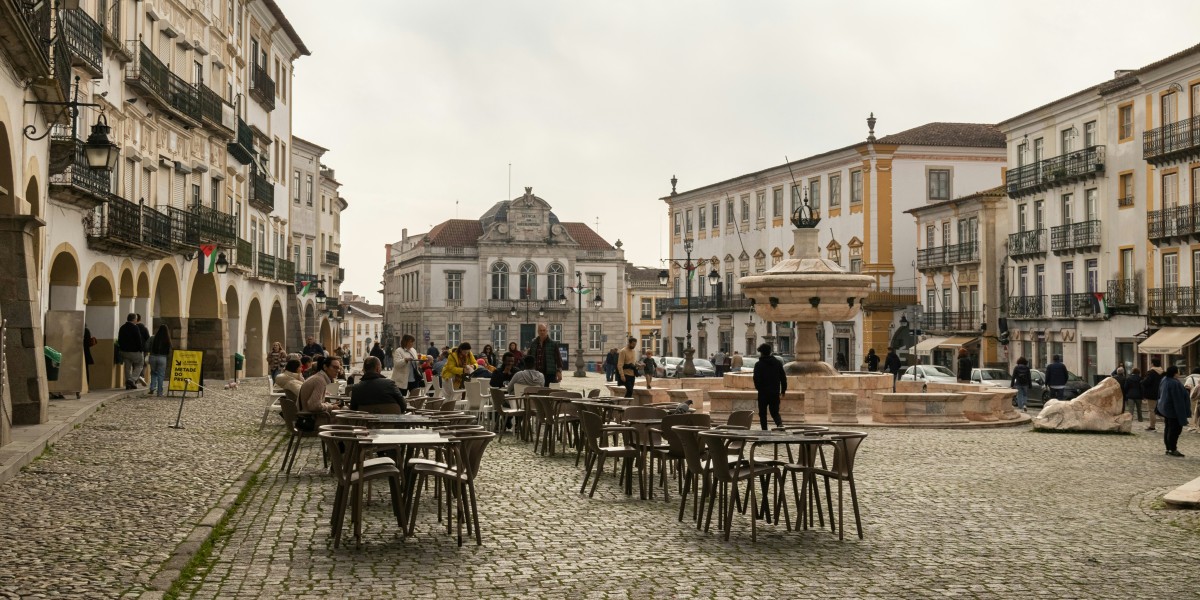
- Évora suits those who want walkability and culture with a train link to Lisbon.
- Vila Nova de Milfontes balances a proper town and coast without Algarve heft outside summer.
- Sines is practical for work linked to the port.
- Porto Covo is a postcard village with Atlantic wind as part of life.
- For value and historic depth, Elvas, Estremoz, Borba, Vila Viçosa, Portalegre, Marvão, and Castelo de Vide are calm and characterful.
- The luxury scene near Comporta and Melides brings rice fields, dunes, and high design with premium prices.
Living in Alentejo or the Algarve
Alentejo has spacious rural living, quieter towns, and a wilder coast. The Algarve, on the other hand, delivers denser services, larger expat communities, more international schooling, and easy flight connections via Faro. Most expats in the Algarve gather around Lagos, Faro, and Tavira/Cabanas in the east. Prices in general are higher along the Algarve coast, so Alentejo is a better option if you're relocating on a tight budget.
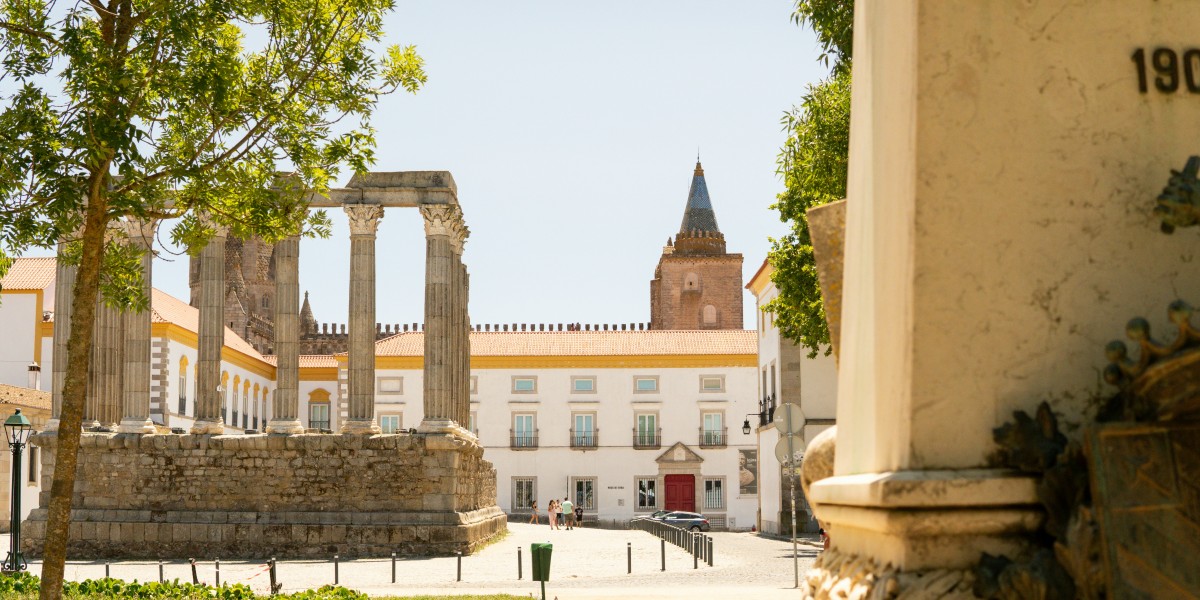
Live like a local in Alentejo
Life rolls at an easy pace between cork oaks, vineyards and a windswept coast. Shops in smaller towns keep old-school hours, markets are morning affairs, and the social calendar runs on harvests and village festas.
- Work with the weather, not against it: drop the shutters (estores) by day, air the house at night, and along the coast pack a light windbreaker for the wind.
- Use the markets properly: the Saturday antiques-and-produce fair in Estremoz is the big weekly outing; Évora’s Mercado Municipal is best early morning; Beja’s market is great for olives and cheese.
- Mark the calendar: FMM Sines (Festival Músicas do Mundo) brings world music to the castle and beaches in July, Évora’s Feira de São João livens up late June, and late‑summer wine festivals, vindimas, see wineries run harvest activities.
Stay in the know about living in Portugal as a foreigner—get our weekly newsletter for the latest travel, legal, and lifestyle news.

